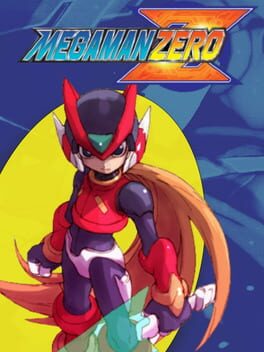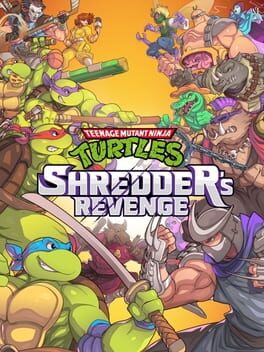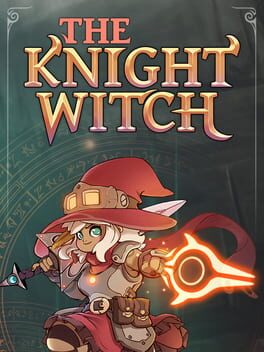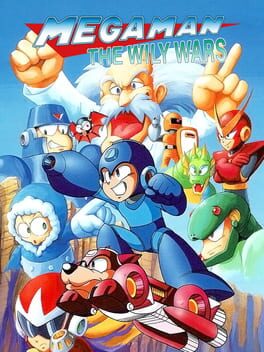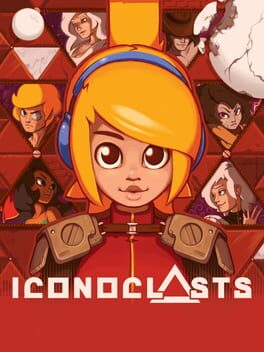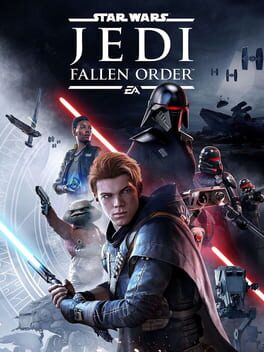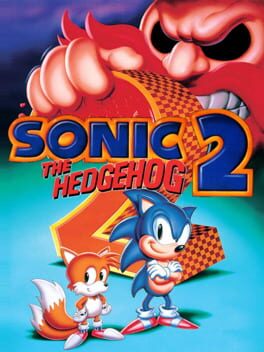ViolentSneeze
1993
Sonic CD is basically a slightly enhanced version of the first Sonic game, which makes sense given when it was in development.
Being that the game was originally CD-based (duh), the music is of higher quality, and it’s a bit shorter than Sonic 1, but unfortunately, that’s where the improvements end. Everything that annoyed me about Sonic 1 (too much platforming, cheap enemy attacks and deaths, water levels, etc.) is present here, but layered on top is a time travel mechanic that doesn’t appear to do anything other than change the music and color scheme of the level.
I suppose I enjoyed this game more than Sonic 1, but just narrowly.
Being that the game was originally CD-based (duh), the music is of higher quality, and it’s a bit shorter than Sonic 1, but unfortunately, that’s where the improvements end. Everything that annoyed me about Sonic 1 (too much platforming, cheap enemy attacks and deaths, water levels, etc.) is present here, but layered on top is a time travel mechanic that doesn’t appear to do anything other than change the music and color scheme of the level.
I suppose I enjoyed this game more than Sonic 1, but just narrowly.
2002
On the surface, Mega Man Zero seems like a cool game, but after some time with it, it seems as though Inti Creates asked themselves, "How can we make a game like Mega Man X but less fun?"
Instead of finding power-ups throughout each stage, the player is asked to instead find creatures called Cyber Elves. Some of these are one-time uses, while others grant permanent health upgrades, stat improvements, or the ability to use subtanks. Before you can use a permanent upgrade, however, the elf holding the power must be fed with a randomly dropped currency, which results in lots of grinding late in the game. To make matters even worse, some elves are missable and using these elves results in the player receiving a lower rank, which thankfully doesn't impact the game itself but instead makes the player feel as though they are doing something wrong. Again, all of these components add up to a less fun experience.
If the mechanics weren't so solid, I wouldn't recommend this game at all, but die hard Mega Man fans might enjoy the challenge. Personally, I wish Inti Creates had retained more of what made the X seres so fun.
Instead of finding power-ups throughout each stage, the player is asked to instead find creatures called Cyber Elves. Some of these are one-time uses, while others grant permanent health upgrades, stat improvements, or the ability to use subtanks. Before you can use a permanent upgrade, however, the elf holding the power must be fed with a randomly dropped currency, which results in lots of grinding late in the game. To make matters even worse, some elves are missable and using these elves results in the player receiving a lower rank, which thankfully doesn't impact the game itself but instead makes the player feel as though they are doing something wrong. Again, all of these components add up to a less fun experience.
If the mechanics weren't so solid, I wouldn't recommend this game at all, but die hard Mega Man fans might enjoy the challenge. Personally, I wish Inti Creates had retained more of what made the X seres so fun.
The best beat-‘em-up of all time? I think so. Shredder’s Revenge impresses on every level - the pixel art is gorgeous, the mechanics are tight and easy to execute, and the utmost respect was given to the IP with abundant references to the original cartoon. Above all else, though, the game is pure fun.
2022
I really wanted to love this game. Visually, the game is very appealing; the art is fantastic. And the idea of a Metroidvania being mashed up with a bullet hell shooter sounds so good on paper.
Unfortunately, the game is hampered by terrible checkpoint placement and a card system that makes battles tougher than they should be because you’re never quite sure which special attacks are mapped to which buttons without looking at the icons in the bottom right-hand corner, which obviously doesn’t work too well when you’re trying to avoid a sea of bullets.
Perhaps I would’ve stuck with the game if there was an option to lower the difficulty, but such a thing doesn’t exist, which is a shame.
Unfortunately, the game is hampered by terrible checkpoint placement and a card system that makes battles tougher than they should be because you’re never quite sure which special attacks are mapped to which buttons without looking at the icons in the bottom right-hand corner, which obviously doesn’t work too well when you’re trying to avoid a sea of bullets.
Perhaps I would’ve stuck with the game if there was an option to lower the difficulty, but such a thing doesn’t exist, which is a shame.
2018
1991
Being a longtime Sonic hater, I decided to pony up the money for Sonic Origins and see if my feelings from when I last played these games (~18 years ago) remains true.
The first Sonic the Hedgehog is the very definition of a bad game. The visuals are nice and the music is cool, but actually playing the game is painful. Sonic is a character known for his speed, yet the player spends 99% of this game moving very slowly from platform to platform or to avoid enemies. This is further made worse by the fact that there are water levels where Sonic moves even slower. It’s perplexing as to how these decisions were made.
The only reason why I finished this game is because playing in Story Mode allowed me to have infinite lives. Otherwise, I would have dropped it.
The first Sonic the Hedgehog is the very definition of a bad game. The visuals are nice and the music is cool, but actually playing the game is painful. Sonic is a character known for his speed, yet the player spends 99% of this game moving very slowly from platform to platform or to avoid enemies. This is further made worse by the fact that there are water levels where Sonic moves even slower. It’s perplexing as to how these decisions were made.
The only reason why I finished this game is because playing in Story Mode allowed me to have infinite lives. Otherwise, I would have dropped it.
2023
Before I write this review, I want to point that even though it’s not a 10/10 or GOTY experience for me, I’m glad it is for so many others. If it means we get more action-platformers in the future, I’m all for it.
On to the review - I’d be a dummy if I didn’t think Hi-Fi Rush is a fantastic looking video game. The art style is so much fun and bursting to life with color. I never got bored looking at the game. Unfortunately, though, I did get a little bored playing it. It’s not that what Hi-Fi Rush offers in terms of gameplay is bad, it’s just that outside of the rhythm component, which is not particularly done well (more on that later), what is offered is very by-the-books. You’re progressing through mostly linear levels collecting things to help power up your character, occasionally finding a side path with more stuff to collect, fighting rounds of enemies in small arenas, and then tackling a boss. Again, none of it is bad, per se, but it’s also not unique.
Where the game is really supposed to shine is its rhythm-based action. Attacks, jumps, dashes, and parries can all be performed in rhythm to power them up. On paper, this sounds amazing, but the execution is sloppy. For one, the music is a complete afterthought and doesn’t help you find the rhythm of the beat. The originals, in particular, are not very good, either. Most of the time, it was really difficult to make out how the music was synced up to the beat, which defeats the purpose of the game. Instead, I had to look for visual cues in the environment to know when I should be on beat. It’s worth mentioning that you can play through the game just fine without being on beat, but the game will remind you after every battle as to how poor you’re doing. Had the music been better and the controller’s rumble feature been utilized to feel the beat (rumble only works when you time an attack with the beat), I think I would have enjoyed myself more. I also think the game would’ve been better served by having each level have its own unique beat. After all, the game’s levels are called tracks. When’s the last time you listened to an album where each track had the same beat?
Overall, I’m pretty disappointed this game didn’t land with me like it did so many others. Based on the hype, I was expecting a platformer mashed up with a game like Amplitude and it falls short of that. Because I enjoy platformers so much, I’m still glad I played it, but I really wanted to love it. Hopefully a sequel will address many of the shortcomings I found in the game.
On to the review - I’d be a dummy if I didn’t think Hi-Fi Rush is a fantastic looking video game. The art style is so much fun and bursting to life with color. I never got bored looking at the game. Unfortunately, though, I did get a little bored playing it. It’s not that what Hi-Fi Rush offers in terms of gameplay is bad, it’s just that outside of the rhythm component, which is not particularly done well (more on that later), what is offered is very by-the-books. You’re progressing through mostly linear levels collecting things to help power up your character, occasionally finding a side path with more stuff to collect, fighting rounds of enemies in small arenas, and then tackling a boss. Again, none of it is bad, per se, but it’s also not unique.
Where the game is really supposed to shine is its rhythm-based action. Attacks, jumps, dashes, and parries can all be performed in rhythm to power them up. On paper, this sounds amazing, but the execution is sloppy. For one, the music is a complete afterthought and doesn’t help you find the rhythm of the beat. The originals, in particular, are not very good, either. Most of the time, it was really difficult to make out how the music was synced up to the beat, which defeats the purpose of the game. Instead, I had to look for visual cues in the environment to know when I should be on beat. It’s worth mentioning that you can play through the game just fine without being on beat, but the game will remind you after every battle as to how poor you’re doing. Had the music been better and the controller’s rumble feature been utilized to feel the beat (rumble only works when you time an attack with the beat), I think I would have enjoyed myself more. I also think the game would’ve been better served by having each level have its own unique beat. After all, the game’s levels are called tracks. When’s the last time you listened to an album where each track had the same beat?
Overall, I’m pretty disappointed this game didn’t land with me like it did so many others. Based on the hype, I was expecting a platformer mashed up with a game like Amplitude and it falls short of that. Because I enjoy platformers so much, I’m still glad I played it, but I really wanted to love it. Hopefully a sequel will address many of the shortcomings I found in the game.
1992
I should have known that I’d get hooked on this game all over again. The original is one of my favorite games of all time and playing through it again reminded me of why - the atmosphere, art design, mechanics, and level design are all top notch.
My only nitpick is that an item tracker was not added for each area. I normally like getting 100% in Metroid games but didn’t feel like it was worth my time scouring every nook and cranny more than the three or four times I already did.
My only nitpick is that an item tracker was not added for each area. I normally like getting 100% in Metroid games but didn’t feel like it was worth my time scouring every nook and cranny more than the three or four times I already did.
2022
2020
Revisiting Super Mario Galaxy as part of the 3D All-Stars Collection was well worth the time. The game looks better than ever thanks to the bump in resolution and frames per second, but more importantly, minus the levels where you’re forced to swim, it’s just as much fun to play now as it was in 2007.

